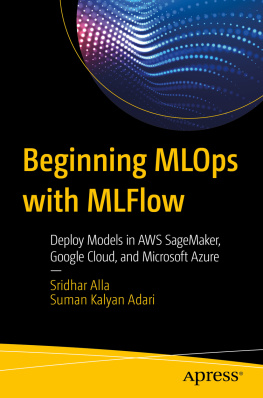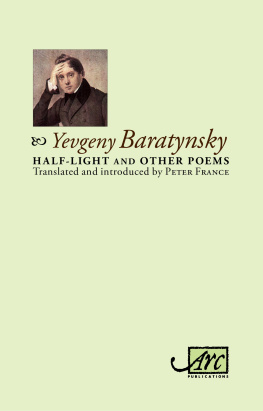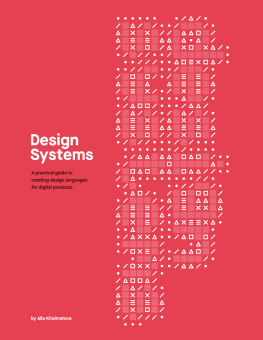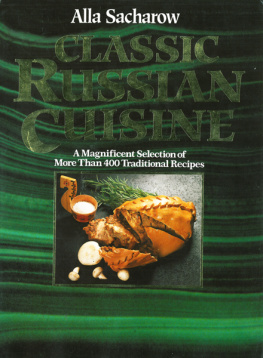The Nenets Song
For Yuri
The Nenets Song
A Microcosm of a Vanishing Culture
ALLA ABRAMOVICH-GOMON
First published 1999 by Ashgate Publishing
Reissued 2018 by Routledge
2 Park Square, Milton Park, Abingdon, Oxon, OX14 4RN
711 Third Avenue, New York, NY 10017, USA
Routledge is an imprint of the Taylor & Francis Group, an informa business
Copyright Alla Abramovich-Gomon, 1999
The author has asserted her moral right under the Copyright, Designs and Patents Act, 1988, to be identified as the author of this work.
All rights reserved. No part of this book may be reprinted or reproduced or utilised in any form or by any electronic, mechanical, or other means, now known or hereafter invented, including photocopying and recording, or in any information storage or retrieval system, without permission in writing from the publishers.
Notice:
Product or corporate names may be trademarks or registered trademarks, and are used only for identification and explanation without intent to infringe.
Publishers Note
The publisher has gone to great lengths to ensure the quality of this reprint but points out that some imperfections in the original copies may be apparent.
Disclaimer
The publisher has made every effort to trace copyright holders and welcomes correspondence from those they have been unable to contact.
A Library of Congress record exists under LC control number: 99063690
ISBN 13: 978-1-138-33662-9 (hbk)
ISBN 13: 978-1-138-33663-6 (pbk)
ISBN 13: 978-0-429-44293-3 (ebk)
Ashgate Studies in Ethnomusicology General Editors Preface
The aim of this series is to encourage ethnomusicological study (with ethnomusicology defined very widely), which has significance for all those involved in it. The series is interested in work which emphasizes the relationships between people and music in cultural context, as individuals within communities, and which acknowledges a varied range of contributions and looks to beneficial outcomes for those being researched as well as for the researcher. To this end it supports what might be regarded as a dialogic praxis, of collaborative discursive action and reflection, in which the researcher might become part of the facilitation of a particular focus, in time and place. It is also an intention to enable the investigation and problematizing of ethnomusicological practices, and to discuss ways of clarifying such issues and addressing them.
There is a place in the series for the traditional studies of particular musical practices, where these are related to cultural and functional significance, and where they give an insight into modes of representation and transmission. This is particularly true where the research process gives those sharing the information a new and useful view of their own activities. Innovative and experimental work that is appropriate to the principal aims of the series is also encouraged.
Malcolm Floyd
King Alfreds University College, Winchester
Maps
Plates
Between pages 82 and 83
When I started thinking about music as a musicologist, I began to appreciate old folk song traditions as an invaluable source of knowledge about the roots and basics of music. In the 1970s, this scholarly interest drove me to the Nenets tundra in search of comparative material to add to my previously conducted research on the music of Finno-Ugrian peoples. Since the fieldwork, I have been continuously exploring the theoretical tools necessary for the scientific explanation of the musical phenomena. This book has brought together the results of both efforts: the discovery of the music and the discovery of its interpretation. As such, it has also fulfilled my obligation towards many people.
The Nenets singers are the first on this list, and I hope that I have managed to attract attention to the musical talent of this nation.
By carrying this study through, I have paid my debt to Zinaida Kupriianova, Natalia Tereshchenko, and Galina Grachiova, scholars who dedicated their entire lives to the study of Arctic peoples and their cultures. I had an opportunity to meet Zinaida Kupriianova and Natalia Tereshchenko at their apartments in Leningrad some time after I returned from my trips to the Nenets tundra and shortly before incurable diseases took their lives. Both of them acknowledged the need for musicological studies of the Nenets song. Galina Grachiova visited me in 1990, at my home in Indianapolis, when she came to work at the Eiteljorg Museum on the Smithsonian Institutes exhibit dedicated to the Arctic peoples. Soon after her visit, I learned about the crash of a helicopter carrying Russian ethnographers to the Arctic. Galina Grachiova was among those who died in that crash. I was left with the memory of our last conversation about the changing political situation in Russia, and the Nenets music. The courage, dedication and commitment to research exemplified by these three outstanding women motivated me to bring my work on the Nenets song to completion despite numerous obstacles.
I would like to express my gratitude to Dr Izaly I. Zemtsovsky, the former head of the Folklore Department at the Russian Institute for the History of the Arts, Russian Academy of Science, St Petersburg (currently, a Visiting Scholar at the Center for Slavic and East European Studies at the University of California, Berkeley), and to the late Dr Boris N. Putilov, the Senior Scholar of the Museum of Anthropology and Ethnography, Russian Academy of Science, St Petersburg. These two leading Russian folklorists promoted my work on the Nenets song during the time when my family, continuously refused permission to emigrate from the former Soviet Union, was struggling with a difficult life situation.
In the United States, I was encouraged by Professor Gyula Decsy from the Uralic and Altaic Studies Institute at Indiana University, Bloomington, to continue my study of the Nenets song.
I am very thankful to Bruno Nettl, Emeritus Professor of the University of Illinois at Urbana-Champaign, who took the role of my major adviser when I decided to present the work as a PhD thesis. Entitled The Nenets Song Tradition, the thesis was completed in 1996.
Ain Haas, Professor of Sociology at Indiana University Purdue University of Indianapolis (IUPUI), and my colleague at the Earth Music Center of Indiana (EMCI), became involved in the later revision of this work. I am thankful to him for always being available when I need advice on the subtleties of English.
I would like to acknowledge the input of the librarians who helped me obtain many hard-to-find sources that are included here as references: Barbara Howes at Butler University, Indianapolis; Kari Jahr and Matthew Radican at IUPUI, Indianapolis; Dr Moira Smith at the Indiana University, Bloomington; and Julia Gauchman at the University of Illinois at Urbana-Champaign. Suzanne G. Snyder, Production Editor of Macmillan Publishing USA, helped me submit the manuscript on time by compiling the index.











